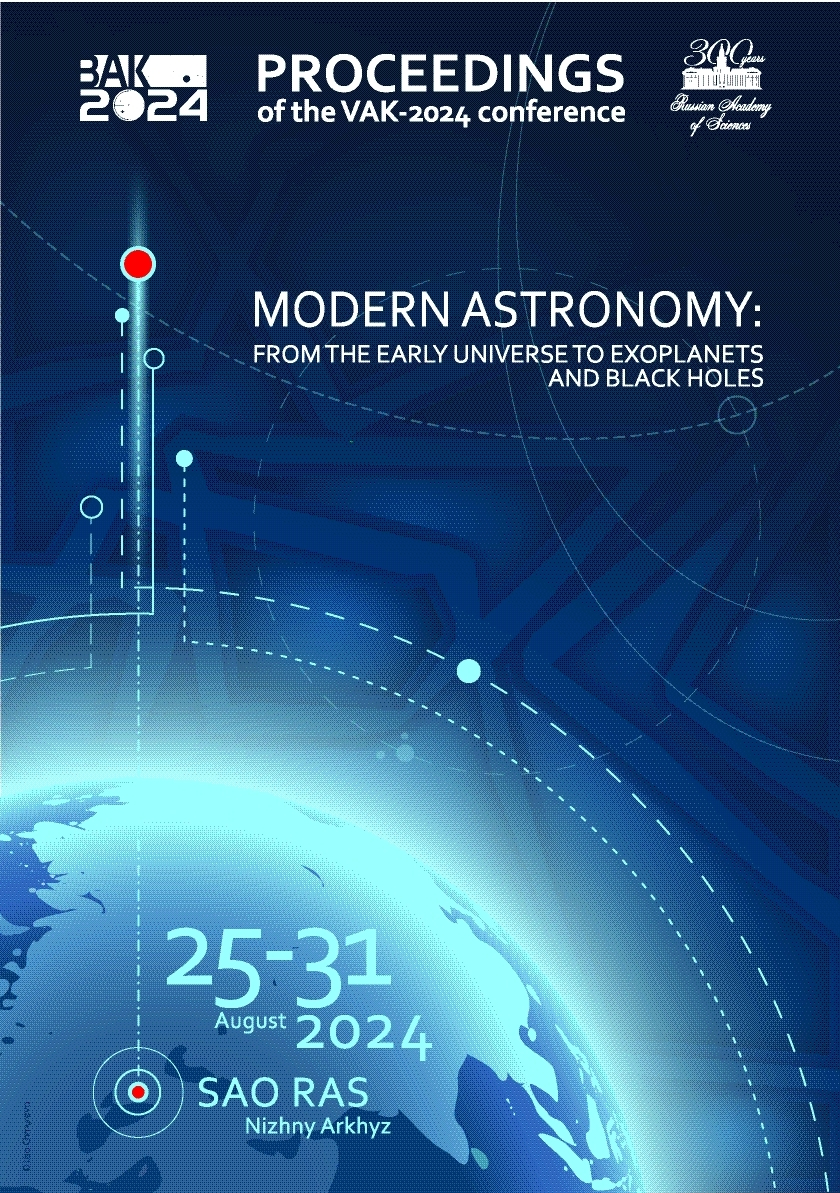UDC 53
UDC 520
UDC 521
UDC 523
UDC 524
UDC 52-1
UDC 52-6
CSCSTI 41.00
CSCSTI 29.35
CSCSTI 29.31
CSCSTI 29.33
CSCSTI 29.27
CSCSTI 29.05
Russian Classification of Professions by Education 03.06.01
Russian Classification of Professions by Education 03.05.01
Russian Classification of Professions by Education 03.04.03
Russian Library and Bibliographic Classification 2
Russian Library and Bibliographic Classification 223
Russian Trade and Bibliographic Classification 614
Russian Trade and Bibliographic Classification 6135
BISAC SCI004000 Astronomy
BISAC SCI005000 Physics / Astrophysics
We present the results of a study of the non-eruptive C2.8 class flare in the active region (AR) NOAA 13256, which occurred on March 19,2023 from 02:12 to 02:19 UTC. This event was chosen on the basis of the test launches of the Irkutsk Solar Radio Spectropolarimeter (SOLARSPEL), Badary (ISTP RAS). Despite the low X-ray class and short duration, according to SOLARSPEL data, this impulsive flare had a complex multi-peak fine time structure, recorded at different frequencies in the microwave range. The presence of a photospheric disturbance in the vicinity of the sunspot penumbra, recorded using HMI/SDO, was of great interest for physics and motivated this study. There are few detailed multi-wavelength studies in the literature of low-power flares accompanied by a response at the photosphere level. Notably, this event was observed simultaneously by four X-ray instruments: SoLO/STIX, ASO-S/HXI, FERMI/GBM, and Konus-Wind. As a result, the unique observation conditions of this flare, from the point of view of the available instruments and various recorded physical high-energy processes, motivated us to carry out detailed research. We found that the photospheric perturbations are mostly associated with the stronger magnetic field in the penumbra rather than with the distribution of the HXR sources. The observed flare ribbons were located in the penumbral PIL region, which revealed the complexity of the larger events in terms of the spatial and temporal structure of the energy release. We also briefly discuss the observed quasi-periodic pulsations.
Sun: solar flare, radio emission, X-ray emission, photospheric perturbations, magnetic fields
1. Altyntsev A.T., Lesovoi S., Globa M., et al., 2020, Solar-Terrestrial Physics, 6, 2, p. 30
2. Aptekar R.L., Cline T.L., Frederiks D.D., et al., 2009, Astrophysical Journal Letters, 698, 2, p. L82
3. Krucker Säm, Hurford G.J., Grimm O., et al., 2020, Astronomy & Astrophysics, 642, id. A15
4. Lemen J.R., Title A.M., Akin D.J., et al. 2012, Solar Physics, 275, 1-2, p. 17
5. Meegan C., Lichti G., Bhat P.N., et al., 2009, Astrophysical Journal, 702, 1, p. 791
6. Nakajima H., Sekiguchi H., Sawa M., et al., 1985, Publications of Astronomical Society of Japan, 37, p. 163
7. Nakariakov V.M. and Melnikov V.F., Space Science Reviews, 2009, 149, 1-4, p. 119
8. Scherrer P.H., Schou J., Bush R.I., et al., 2012, Solar Physics, 275, 1-2, p. 207.
9. Song Y., Tian H., Zhu X., et al., 2020, Astrophysical Journal Letters, 893, 1, id. L13
10. Song Y. and Tian H., 2018, Astrophysical Journal, 867, 2, id. 159
11. Zhang Z., Chen D.-Y., Wu J., et al., 2019, Research in Astronomy & Astrophysics, 19, 11, id. 160
12. Zimovets I.V., McLaughlin J.A., Srivastava A.K., et al., 2021, Space Science Reviews, 217, p. 66








